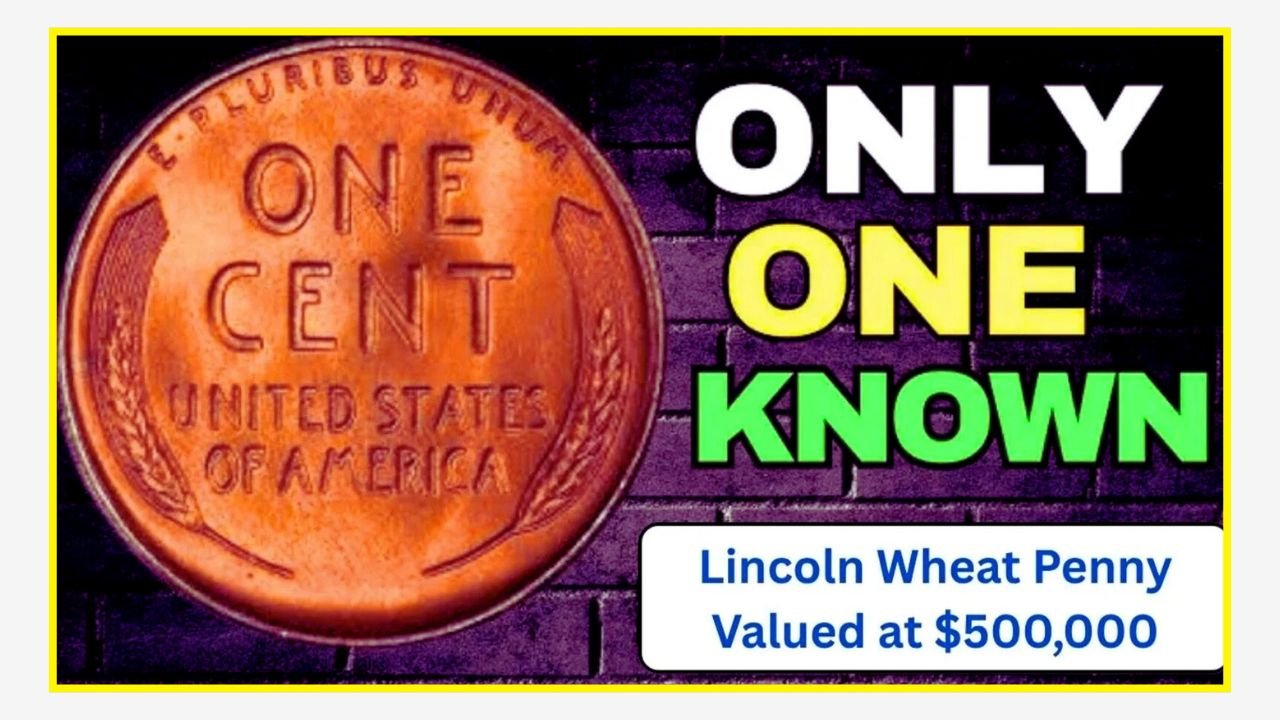You might have a treasure in your loose change! A rare Lincoln Wheat Penny could be worth up to $500,000, and it might be sitting in your pocket, piggy bank, or old coin jar. These small copper coins, minted between 1909 and 1958, are a favorite among collectors, but some are so rare they can fetch jaw-dropping prices. Let’s dive into what makes these pennies so special, how to spot one, and why they’re worth a fortune.
A Penny with a Big History
The Lincoln Wheat Penny was first made in 1909 to celebrate Abraham Lincoln’s 100th birthday. It was the first U.S. coin to feature a real person, with Lincoln’s face on the front and two wheat stalks on the back. Over the years, millions were minted, but a few rare ones stand out because of errors or low production numbers. These are the coins collectors dream about, and they can turn a single cent into a life-changing payday.
The Million-Dollar Mistakes
What makes some Lincoln Wheat Pennies so valuable? It’s all about minting errors or limited runs. For example, the 1909-S VDB penny, with the designer’s initials “VDB” on the back, had a tiny mintage of just 484,000. Another gem is the 1943 Bronze Penny, accidentally made in bronze instead of zinc-coated steel during World War II. Only a handful exist, and one sold for $1.7 million in 2010! Errors like double-stamped dates or missing mint marks also drive up value.
Here’s a quick look at some of the rarest Lincoln Wheat Pennies:
| Year | Type/Error | Estimated Value |
|---|---|---|
| 1909-S VDB | Low mintage, designer’s initials | $100,000–$500,000 |
| 1943 Bronze | Minting error (bronze instead of steel) | $200,000–$1,700,000 |
| 1955 Double Die | Double-stamped date | $25,000–$100,000 |
| 1969-S Double Die | Double-stamped design | $25,000–$75,000 |
How to Spot a Valuable Penny
Think you might have one of these rare coins? Grab a magnifying glass and check your pennies! Look at the year and mint mark (a small letter like “S” for San Francisco or “D” for Denver, found below the date). Check for errors like doubled letters or numbers that look blurry or overlapped. The 1943 Bronze Penny is heavier than the common steel version, so a magnet won’t stick to it. If you’re unsure, take your coin to a local coin shop or appraiser for an expert opinion.
- Check the date and mint mark for rare years like 1909-S or 1943.
- Look for doubling in the text or design, especially on 1955 or 1969-S pennies.
- Test 1943 pennies with a magnet; bronze ones won’t stick.
- Compare your coin to online images of known rare pennies.
- Get a professional appraisal if you think you’ve got a winner.
Where to Find These Hidden Gems
You don’t need to dig through a museum to find a rare Lincoln Wheat Penny. Check your spare change, old piggy banks, or inherited coin collections. Flea markets, estate sales, or even your grandma’s attic might hold a forgotten treasure. Some people have found valuable pennies in rolls from the bank or while sorting through loose change at a cash register. Keep your eyes open—you never know where a $500,000 penny might turn up!
What to Do If You Find One
If you think you’ve found a rare penny, don’t clean it! Cleaning can lower its value by damaging the surface. Store it in a soft plastic coin holder to keep it safe. Then, reach out to a professional coin dealer or auction house. They can verify if it’s genuine and help you sell it to collectors. Major auction houses like Heritage Auctions or Stack’s Bowers have sold rare pennies for huge sums, so you could be in for a big payout.
The idea that a single penny could be worth half a million dollars sounds like a fairy tale, but it’s real. Every time you empty your pockets, you could be holding a piece of history worth a fortune. So, next time you find a Lincoln Wheat Penny, take a closer look—it might just change your life!

